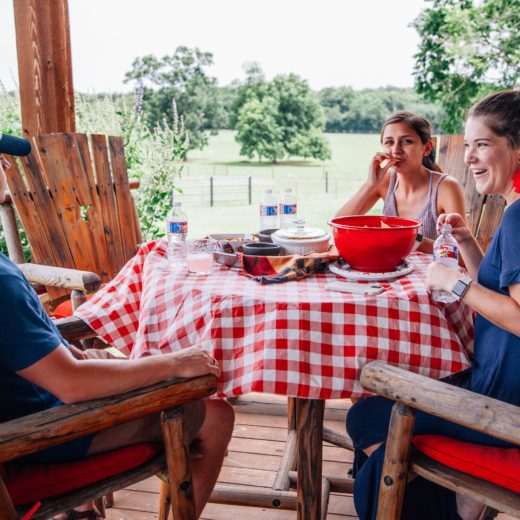“I’m fat.” “My legs are too skinny.” “I’m not hungry.” “I want cereal instead.”
Do any of these phrases sound familiar? Are you feeling overwhelmed by conversations about food and/or body image with your kids? You are not alone. As children grow older and want to choose what they eat, conversations around food may become confusing or difficult. And with social media and peer pressure, it can be hard to know how to help your child cultivate a healthy body image. In order to support the families we serve, we put together four key tips to support healthy conversations about food and body image that you can use at home…
1. Avoid “good food/bad food” binaries
When talking about food, focus your conversation around the positive aspects of the food.
We often label foods as “good” or “bad”. When we think about food in this polarized way and pass this mentality on to our kids, our kids may feel guilty about wanting or eating certain foods. Kids may also feel like they failed after consuming so-called “bad” foods. As a result, they may become more obsessed with these foods, and this can contribute to disordered eating.
Instead of playing into the “good food/bad food” mindset, focus on the ways different kinds of food meet our bodies’ needs for growth, strength, pleasure, etc.
- Ask…
- How does it taste? Salty, sweet, tangy, bitter, bland
- How does it make your body feel? Energized, heavy, tired, hyper, happy
- How is it satisfying your hunger?
- Share a Fact:
- e.g., Figs have as much calcium as milk and calcium helps build strong bones.
2. Teach your child to respect their body’s signals for ‘full’ and ‘hungry’ and listen to what their body needs
It is important that children learn how to recognize and respect feelings of fullness and hunger. To help them learn how to do this, ask them how full their belly is feeling.
If your child is hungry before dinner, it is okay to allow them to eat a small snack, and the same goes for any other time of day. Rather than telling your child she has to eat something, talk about the nutrition benefits of the food you want to her to try.
While it can be frustrating when your child doesn’t eat what you made for dinner, pressuring your child to eat it will probably only make things worse. Make other options available, even if it is cereal! Talk about something light-hearted at dinner to cultivate relaxation. If your child is super tense during dinnertime due to conversation that feels stressful, it’s unlikely they’ll want to eat.
Does your child repeatedly avoid eating what you prepare? Get curious, reflect, and assess the situation… preferably not during mealtime. You might want to have a heart-to-heart conversation with your child about food to gather more information and try out tip #3 below…
3. Involve the whole family when choosing options for meals/snacks
Have a family brainstorming session and create a list of snacks and/or meals that everyone can agree on. This list can hang in the kitchen as a reminder of the different options available. If you feel like you need support, reach out to a professional such as a nutritionist or naturopathic doctor who can help you brainstorm other food options.
4. Talk about body function rather than body shape, size, weight
Instead of overthinking how your bodies look, take a moment to appreciate what your bodies do for you every day. Body neutrality encourages us to live as we are, without judging our body’s weight, shape, or size.
If your child says: “My belly is getting too big.”
Try: “Your stomach’s job is to digest food. How well is your belly digesting the food you are putting in it?”
If your child: Compares one person’s body parts to someone else’s.
Try: “There is no such thing as one perfect or ideal body type.”
If your child says: “I’m not skinny enough/ too skinny for _______.”
Try: Having your child list all the things their body allows them to do every day.
If your child says: “I don’t like the way my arms look.”
Try: Helping them remember a time when their arms comforted a friend or pet with a hug.
If your child says: “My thighs/hips/butt are too big/flat/lumpy/thin/weak.”
Try: “Your legs allow you to walk around every day. Your hips are joints that make it possible for you to jump, sit, dance and move around in your world.”
If your child thinks: ‘My body is an object to be judged, used, perfected.’
Try: ‘Your body is an instrument for expression, creation, connection.’
Instead of: “You look beautiful/handsome/great!”
Try: Telling your child how much you appreciate them.
We hope these ideas help you and your family talk about food and body image in a relaxed, compassionate, inclusive way. While it may be challenging to shift your attitudes around food and body image at first, with clear intention and some practice, you and your family can start to cultivate a healthier mindset. At Intuition Wellness Center, we specialize in health and wellness services for children, young adults, and their families. If you think you would like some extra support, we’re here for you.
Written by: Amy Cormode, LAC and Debby Urken, LMSW


